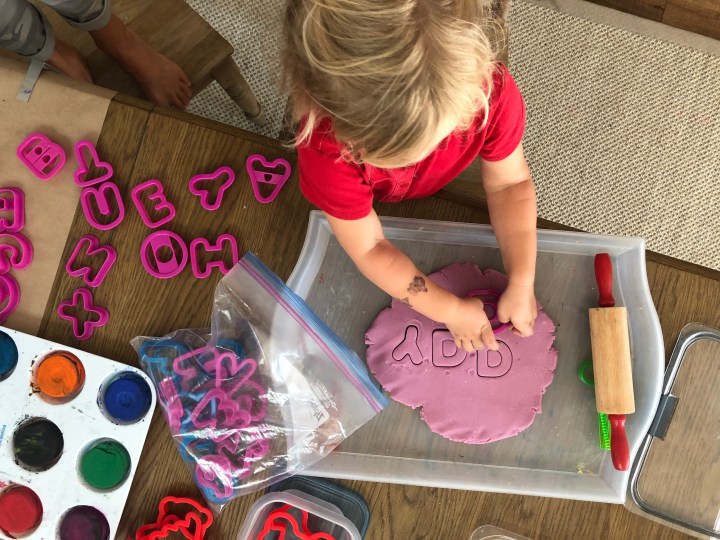
Two of the most frequent questions that I get are “How do I make sure that my child is ready for kindergarten?” and “What should I do at home to teach my child to read?” The first part of my answer always relates to the fact that most preschool children are typically not ready to read, and the best things to do with them at home to prepare them for school are to make sure they have plenty of free time to play and learn about the world, and to make sure you’re reading a LOT to them. From there, I often talk to parents about easy, play-based ways to build alphabet knowledge with preschool-aged children, so that when their brains are ready for reading, they’ve got the background knowledge they need to jump right in. So, what are some really easy ways to build letter recognition and alphabet knowledge?

Before you get started on activities, let’s talk why letter recognition and alphabet awareness are important to begin with! To make it really simple and easy to understand, once children can identify letter names, they can learn to connect letter names to sounds, and it is this phonemic awareness that leads to learning to decode (read) words. For more on this, check out “Learning to Read and Write: Developmentally Appropriate Practice for Young Children,” a joint publication from the International Reading Association adn the National Association for the Education of Young Children.
Next, you’ll need to know which letters your should “teach” first. Research is mixed here, but I’m a firm believer in starting with letters that are important to them: the letters in their names, followed by the beginning letters of names of other people or pets who live in their house. (I’ll never forget walking down the street one day when my 3-year-old stopped suddenly and yelled, “Mommy, look, the pizza place has your letter!”) Then move to really common letters (think about Wheel of Fortune and maybe hit up R, S, T, L, N, and E if your child doesn’t have those in his or her list of “important” letters). You’ll find different orders of introduction in various “teach your child to read” programs, but, once again, I’m not advocating for teaching a preschooler to read… I’m advocating for exposing them to letters so that when they enter school, they’re confident and ready to go. In the interest of keeping childhood fun, let’s focus on what children care about!
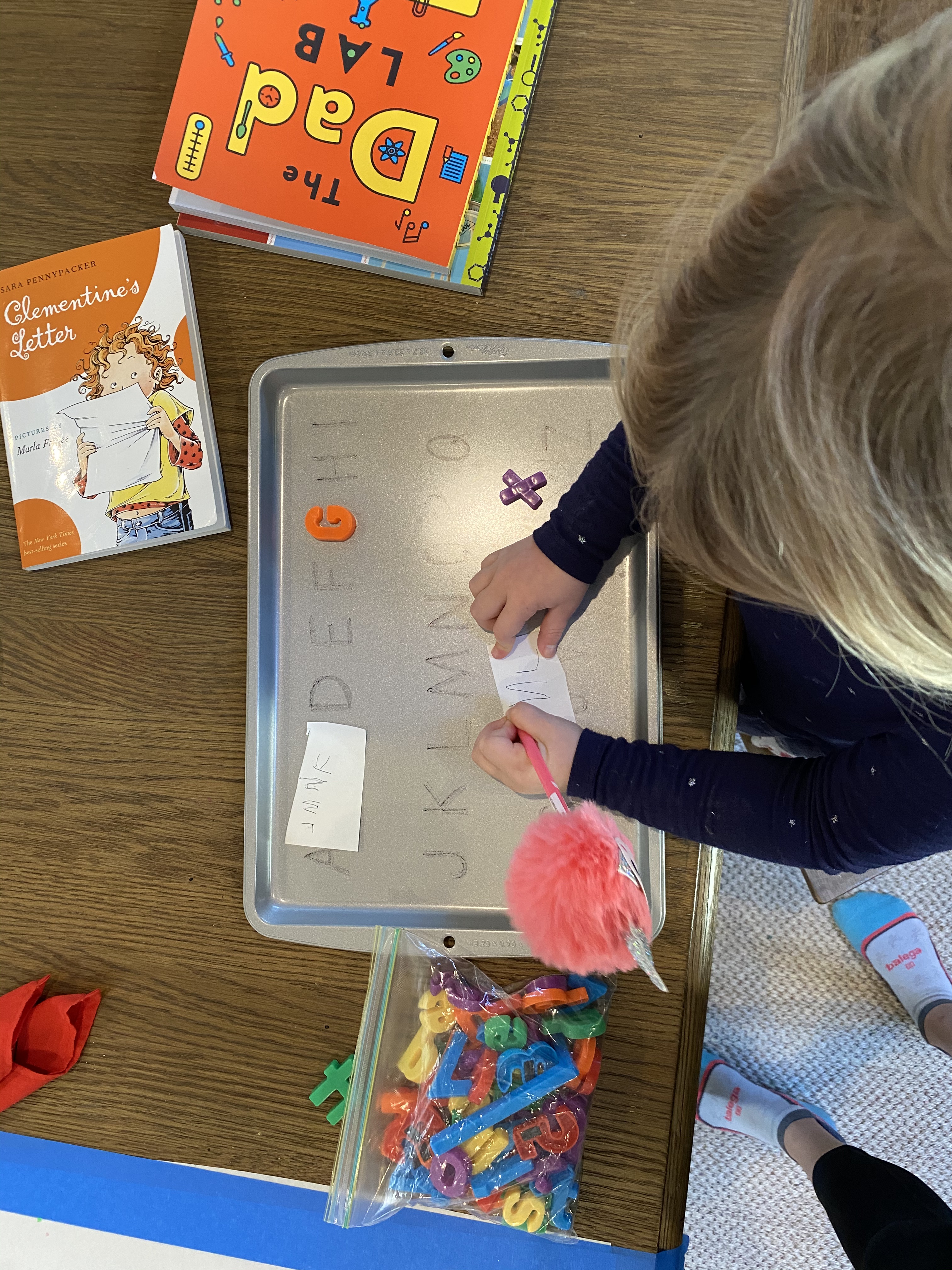
*** Only after children are recognizing letters by their shapes (their letter “names”) should you begin to talk about what sound the letter makes (keep in mind this is VERY difficult in English, because so many of our letters can make multiple sounds. For this reason, start with just the letter “name” until your child has that down). Keep it casual, and remember your child is a pre-reader! Beware of making this “work” or having it sound like a quiz– your preschooler has the rest of his or her life to “work” and be tested! ***
So, what are some easy ways to get this letter recognition and build alphabet knowledge?
- Repeated exposure! Read books and talk about the words on the page (this can be as simple as actually pointing to the text and letting your child know that these are the words to the story you’re telling). Point out letters in the world around them and connect them to something important in the children’s lives.
- Read alphabet books. I’m not a huge fan of standard alphabet books (they’re just not as much fun to read as a story, and they often don’t make phonetic sense, such as using the word “xylophone” to represent the letter “x”), but recently, some wonderful stories told in alphabetical order have been published that we have loved in our house! Two that we love are The Little Red Cat Who Ran Away and Learned His ABCs (the Hard Way) by Patrick McDonnell and Oops, Pounce, Quick, Run! An Alphabet Caper by Mike Twohy.
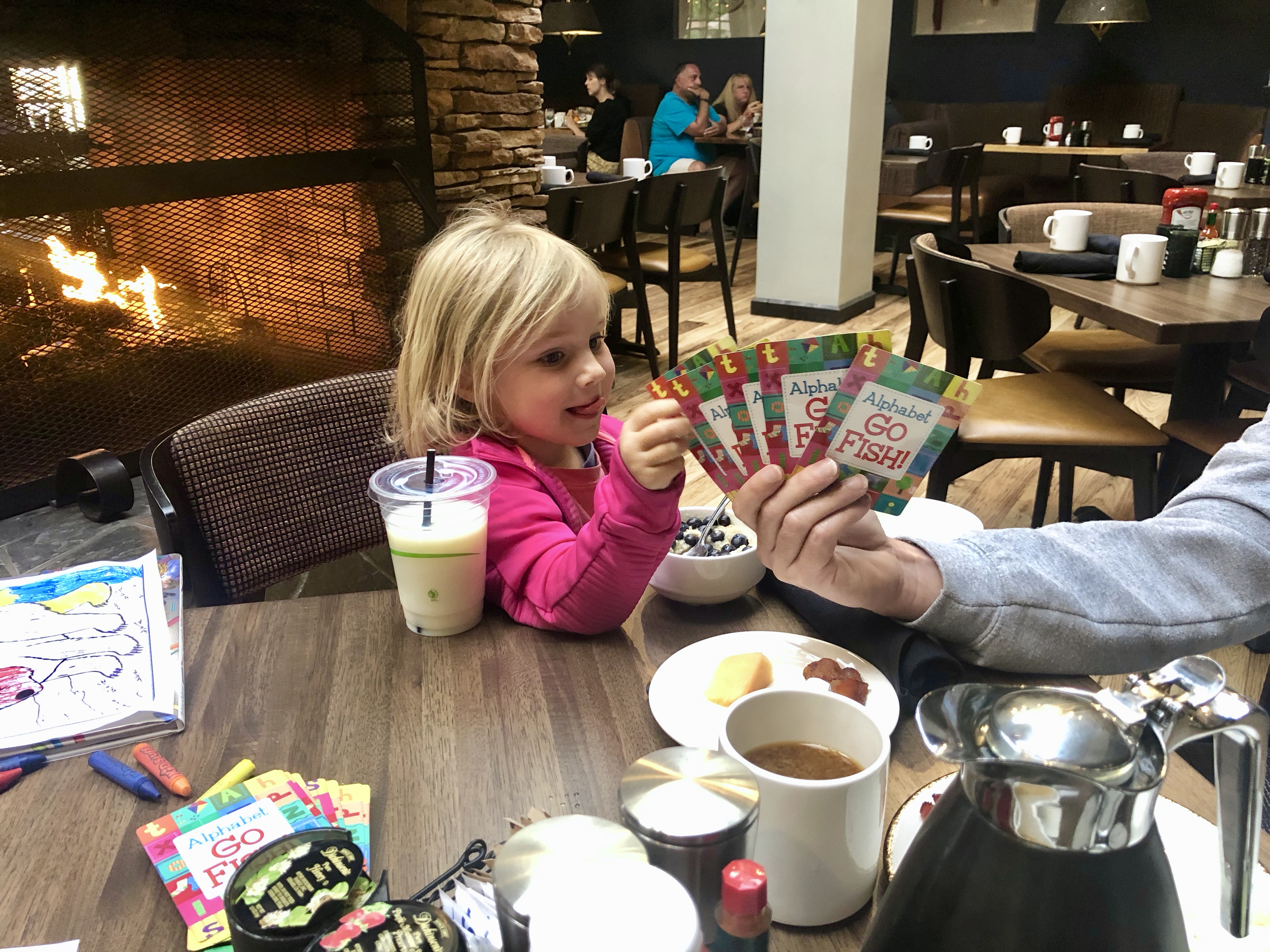
- Play games! We love Alphabet Go Fish.
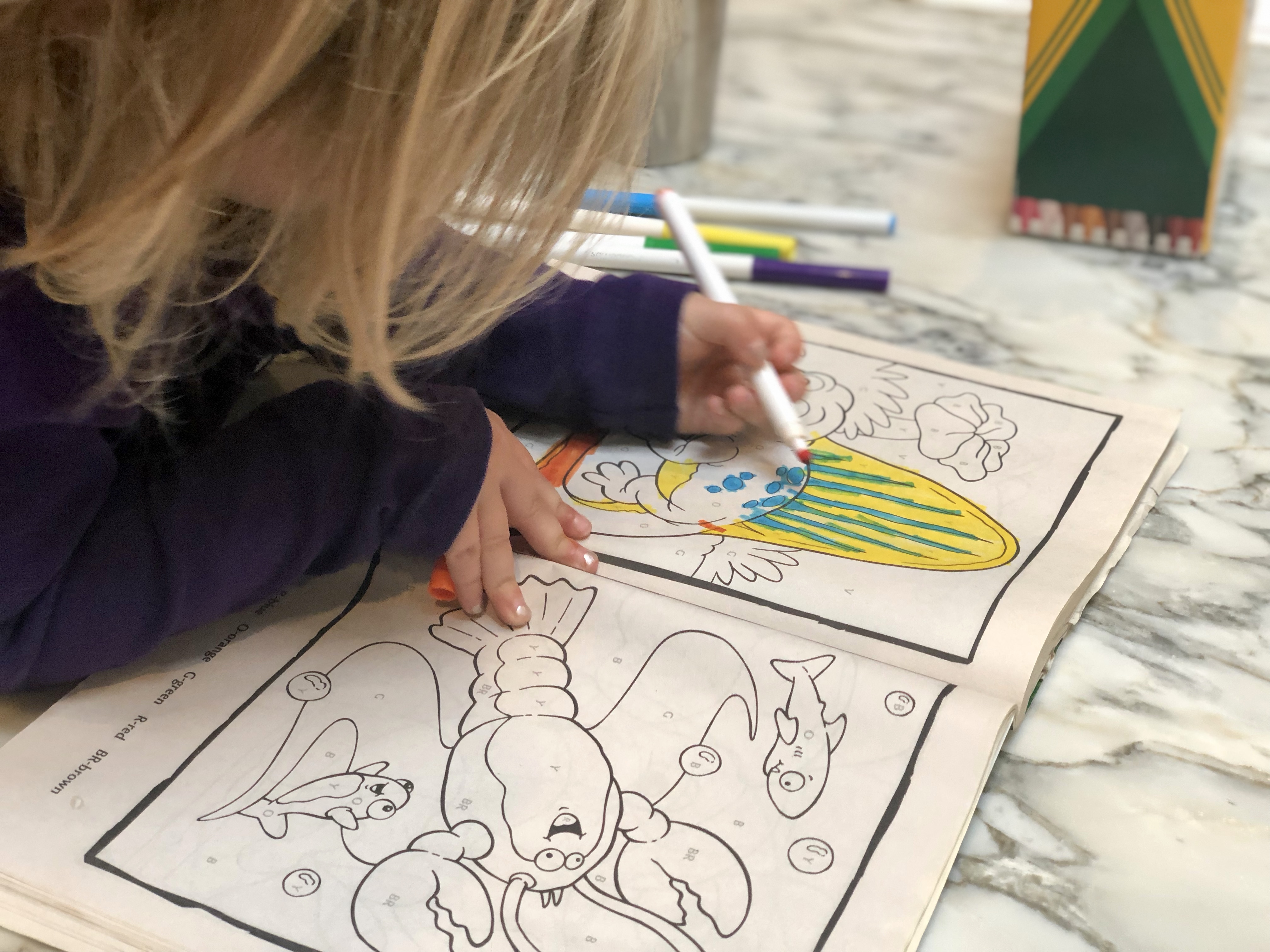
- Utilize coloring books that are color by letter (or color by number, if number recognition is a goal!). Crayola doesn’t seem to make the amazing coloring books the pages above came from anymore, but here is a similar color-by-letter coloring book.

- When eating out at kid-friendly restaurants with children’s menus, use the word searches as opportunities to search for different letters. You can call out the letters of the child’s name and have him circle or color them as he sees them.
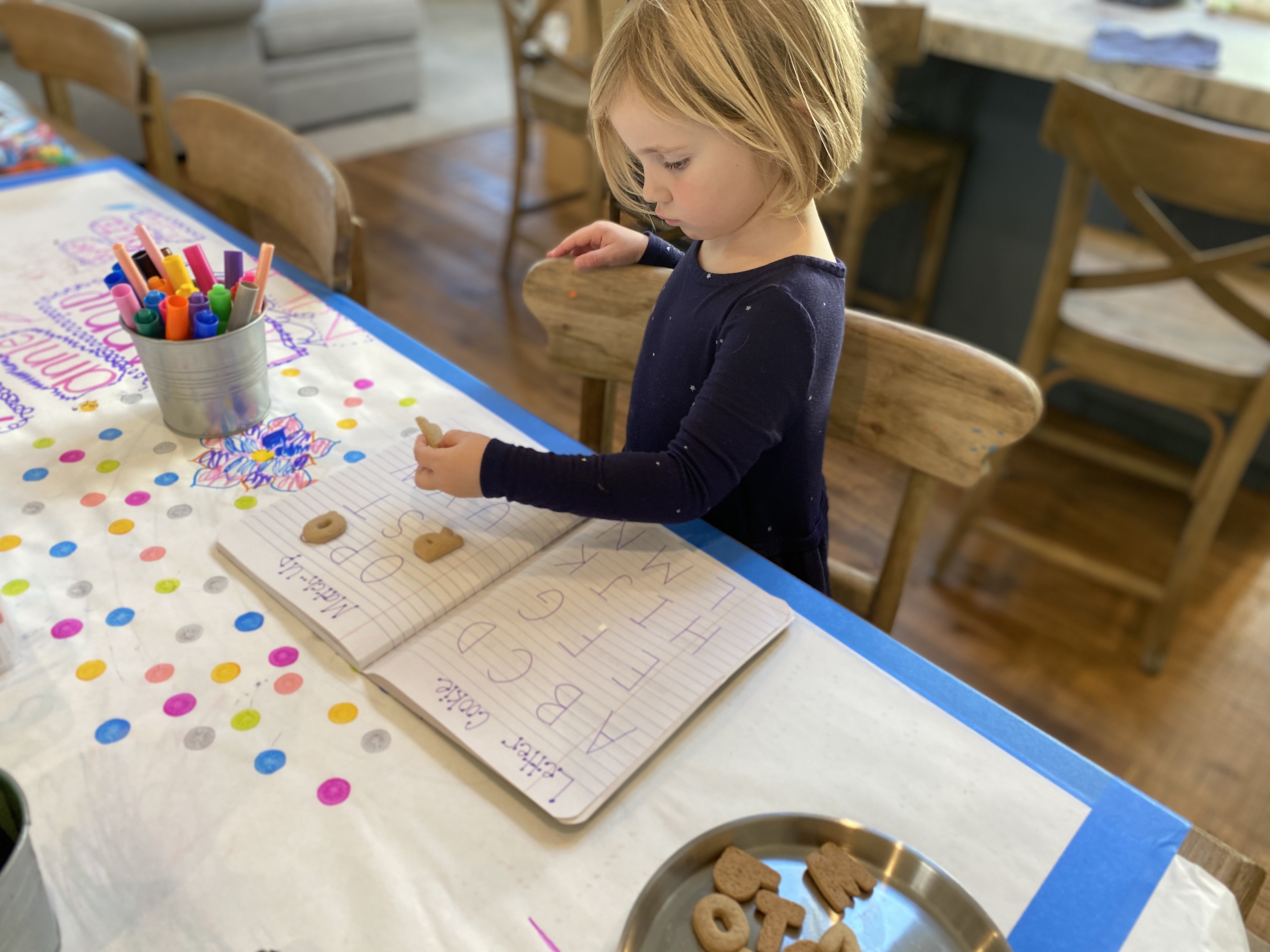
- Have an alphabet-themed snack with Trader Joe’s Schoolhouse Cookies. We’ve done formal letter-matching activities with them, as well as just eaten them informally and talked every now and then about which letters the girls were eating.

- Make letters out of playdoh! Kids can roll and shape the dough into different letters, such as to spell their names, cut out letters using cookie cutters, or stamp letters with letter stampers. If you’re really ambitious, you could even use those same cookie cutters to make letter-shaped sugar cookies for a special snack!
- Create things with alphabet beads and pipe cleaners. When the girls were really little, they’d just string the beads on the pipe cleaner (terrific fine motor practice!) and we’d chat every now and then about what letters they noticed. As they got older, they’d start to make necklaces with their names (because, remember, they are really invested in those letters, so children often learn how to recognize the letters in their names and spell their names first). Last year, our kindergartener made napkin rings for family members at Thanksgiving and Christmas.
- You can find holiday-themed letter-matching printables for just about any holiday (this Christmas tree one is one of our favorites and can easily be adapted to fewer letters or even sight words). We have done similar activities with colored stickers and large pieces of paper for Valentine’s Day and St. Patrick’s Day (which, once again, is also easy to differentiate for older children by writing sight words instead of letters).
- Our older daughter started copying books when she was about 3.5 years old (it’s three years later and this is still one of her favorite things to do!). She didn’t know many letters at this point and certainly couldn’t read on her own, but the copying practice helped her recognize more letters, as well as deepen her understanding of how they came together to make words, which came together to make stories.
- Give them opportunities to play with letters! Taking pieces of alphabet puzzles and putting them in rainbow rice, playing with alphabet stickers, or simply laying letters out with writing materials is fantastic exposure. These can also be used for letter play in a more formal “teaching” moment, such as using the letters to trace large letter outlines or even spell words.
- Provide different textures and materials for children to practice writing. They may not want to sit with pencil and paper, but give them shaving cream and they’ll spend hours writing letters! The beach is also a wonderful canvas for large-scale letter recognition and writing practice.
- Let them write, and refrain from correcting them! When they’re three years old, or four years old, or even five years old (and writing at home), it’s fine if their letters or words are backwards, if their sentences are jumbled, or if their stories are simply strings of letters that make no sense together. You want them to enjoy the writing process, so that they’ll want to write, so that they do it more often, so that they get better at it… Make sense?
When in doubt, keep reading out loud to your children! “The single most important activity for building these under- standings and skills essential for reading success appears to be reading aloud to children” (from “Learning to Read and Write: Developmentally Appropriate Practices for Young Children“).
If you liked this post, be sure to check out:
- What We’re Doing to Combat the Summer Slide
- Literacy Sensory Bins
- For the Love of Clipboards
- The Importance of Invented Spelling
All links for purchase are Amazon Affiliate links. Thank you for considering making a purchase through my links!
















Great advice. I love that you mention teaching children letters that are meaningful to them first, letters in their name and of loved ones. Great
LikeLike
Thank you! Such an easy way to get kids invested in their learning.
LikeLiked by 1 person